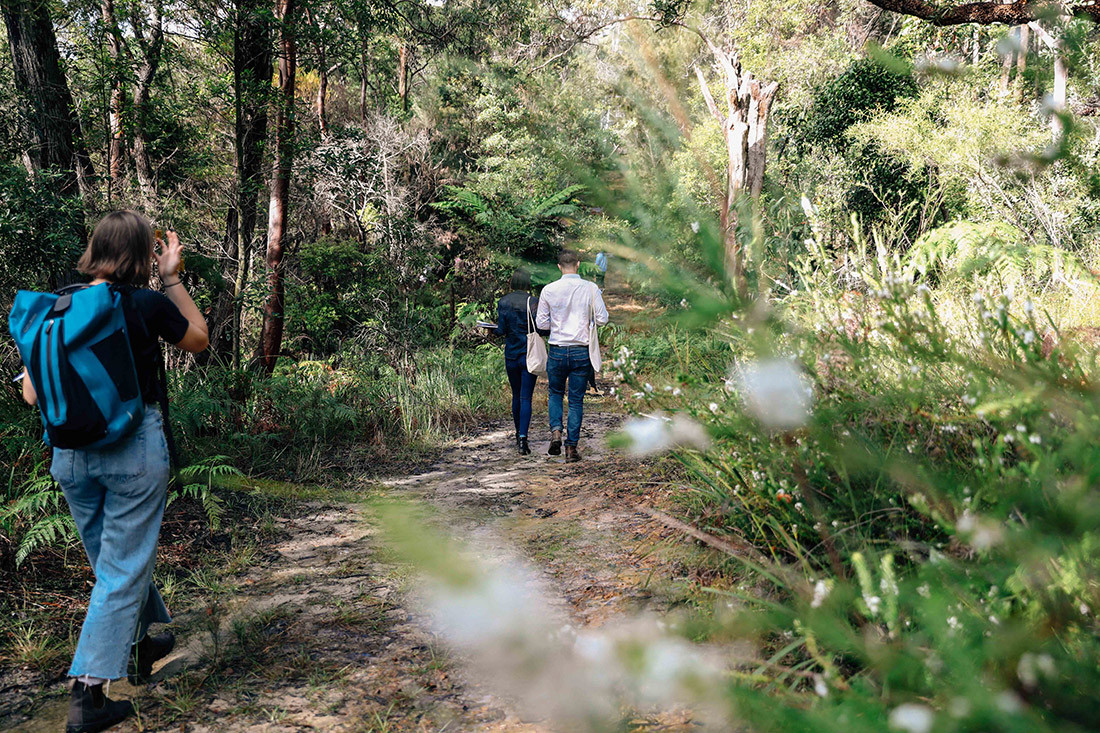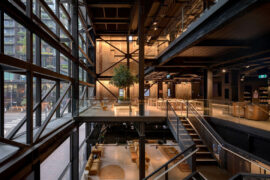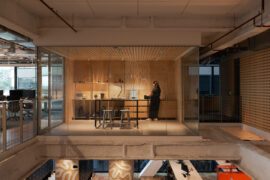Forget about human-centred design; a new report published by Arcadia Landscape Architecture says a shift to Country-centred design is what Australia needs.

It’s evident that, throughout the architecture and design industry—and even more broadly, the built environment fields—the vast majority of us genuinely want to do the right thing by First Nations people, as well as Country. The challenge, however, is knowing where and how to begin cultural engagement in a way that goes deeper than what leading historian Mark McKenna dubs the “ornamental recognition of Indigenous Australians”, and instead starts to create meaningful change.

Arcadia suggests ‘walkshops’ on Country with local Knowledge Holders
Our hats go off to Arcadia Landscape Architecture for releasing a truly groundbreaking report, bequeathing answers to the questions so many of us have been wondering in simultaneous silence. Questions like… How can I integrate connection to Country into my work, without it being another buzzword or just a box-ticking exercise?
Produced in collaboration with Dr Danièle Hromek, a spatial designer, researcher, and Budawang woman of the Yuin nation, along with Arcadia’s own Kaylie Salvatori, a landscape architect and proud Yuin woman, the report is titled: Shaping Country: Cultural engagement in Australia’s built environment.

“In the last 12 months, we’ve been approached by clients and others seeking guidance and advice on how to go about engaging First Nations peoples in their projects,” says Arcadia’s founder, Alex Longley. Arcadia’s own journey of consciously honing its approach to First Nations engagement and connection to Country as a practice began about 5 years ago, well before it became the latest buzzword.
Even prior to that, acknowledgement of Indigenous narratives and consideration of Country have always been core elements of the firm’s projects. in fact, it’s the first thing the team looks into when embarking on a new project. Susan Wakil Health Building and St Leonards Health Organisation Relocation (SHOR) are two examples from Arcadia’s body of recent work that serve as exemplary case studies of First Nations engagement in practice and the unique value it brings to the design perspective.

Meaningful First Nations engagement is about ‘collaboration, not consultation’ the report stresses
“We were once tasked with designing a new landscape area for a school. There was a Casuarina tree on-site that was earmarked for removal, to accommodate the built form. But during a walkshop on Country with a local Elder, he shared with us that Casuarina trees have been purposefully planted in play areas throughout Indigenous communities for centuries as a tool to protect children from snakes,” says Michael Barnett, Arcadia’s director, in an anecdote quoted in the report. “…the Casuarina became a focal point of the design from there on out.”
Suffice it to say that the Sydney-based landscape architecture practice is well poised to offer advice on the best etiquette for cultural engagement – and it’s getting noticed.

Situated on Gadigal land, the grounds surrounding Susan Wakil Health Building at University of Sydney cultivate an interpretation of the cycle of healing. Photo: Brett Boardman
Shaping Country: Cultural engagement in Australia’s built environment is the result of a passion project Arcadia began earlier this year led by Indigenous landscape strategist, Kaylie Salvatori, and Dr Danièle Hromek. The project heeds the industry’s silent yet resounding call for guidance in achieving more meaningful First Nations engagement – but to Salvatori and Hromek, the opportunity to raise the bar of First Nations awareness in Australia’s built environment was of personal significance.
The report itself is a prudently articulated culmination of pertinent insights and learnings Arcadia has derived through its extensive experience with cultural engagement in practice. Its contents address everything from the ‘right’ language and etiquette; how to engage with Knowledge Holders and common challenges that are encountered; steps for engaging with country (complete with case study); through to how meaningful First Nations engagement leads to ‘Better Placed’ design, and the impacts on commercial outcomes. On top of all that, it also presents advice on what to do when cultural engagement is not possible, actionable next steps and suggestions for further reading.

Arcadia’s approach is for a design outcome which subtly communicates the history of the site so that occupants have the opportunity to reflect while using the space.
“More than anything, I hope [Shaping Country] fast-tracks awareness amongst the industry,” says Longley. “It would be great to see us reach a base level of shared understanding across the built environment sector – only from there will we be able to move forward.”
“If we are truly going to start designing for this place, we need to start including the longer narratives of this place – the narratives that go back to before time can be measured – in the design of the place,” says Dr Hromek. “To me, this means ensuring Country is lead architect and First Peoples are narrators and interpreters for all projects – not just those with perceived Indigenous values or relevance.”
Well, what are you waiting for? Have a read of Shaping Country: Cultural engagement in Australia’s built environment now. We’d love to hear your thoughts.
INDESIGN is on instagram
Follow @indesignlive
A searchable and comprehensive guide for specifying leading products and their suppliers
Keep up to date with the latest and greatest from our industry BFF's!

For Aidan Mawhinney, the secret ingredient to Living Edge’s success “comes down to people, product and place.” As the brand celebrates a significant 25-year milestone, it’s that commitment to authentic, sustainable design – and the people behind it all – that continues to anchor its legacy.

Welcomed to the Australian design scene in 2024, Kokuyo is set to redefine collaboration, bringing its unique blend of colour and function to individuals and corporations, designed to be used Any Way!

Nicole Larkin has been awarded the 2025 Marten Bequest, providing two years and $50k to research coastal resilience and adaptation.

This year’s Open House Melbourne Weekend program has been unveiled, with almost 200 buildings, places and experiences set to open to the public in July.

The fourth edition of the First Nations Writers Festival took place in May 2025, and we spoke to Baka Barakove Bina about the importance of place and home in his writing, as well as the things that make the Pacific region so distinctive.
The internet never sleeps! Here's the stuff you might have missed

With its new Series 8 Ovens, Bosch leverages the intuitive appeal of quiet efficiency to address the most pressing challenge of a modern home chef: making healthy cooking not only delicious but quick, effortless and inspired.

Discover the range designed to let people gather and ideas flow

Tzannes has completed work at The Brewery in Sydney’s Central Park, marking the culmination of an internationally significant adaptive reuse project.

The Arup Workplace in Perth/Boorloo, designed by Hames Sharley with Arup and Peter Farmer Designs, has been awarded The Work Space at the INDE.Awards 2025. Recognised for its regenerative design, cultural authenticity, and commitment to sustainability, the project sets a new benchmark for workplace architecture in the Indo–Pacific region.